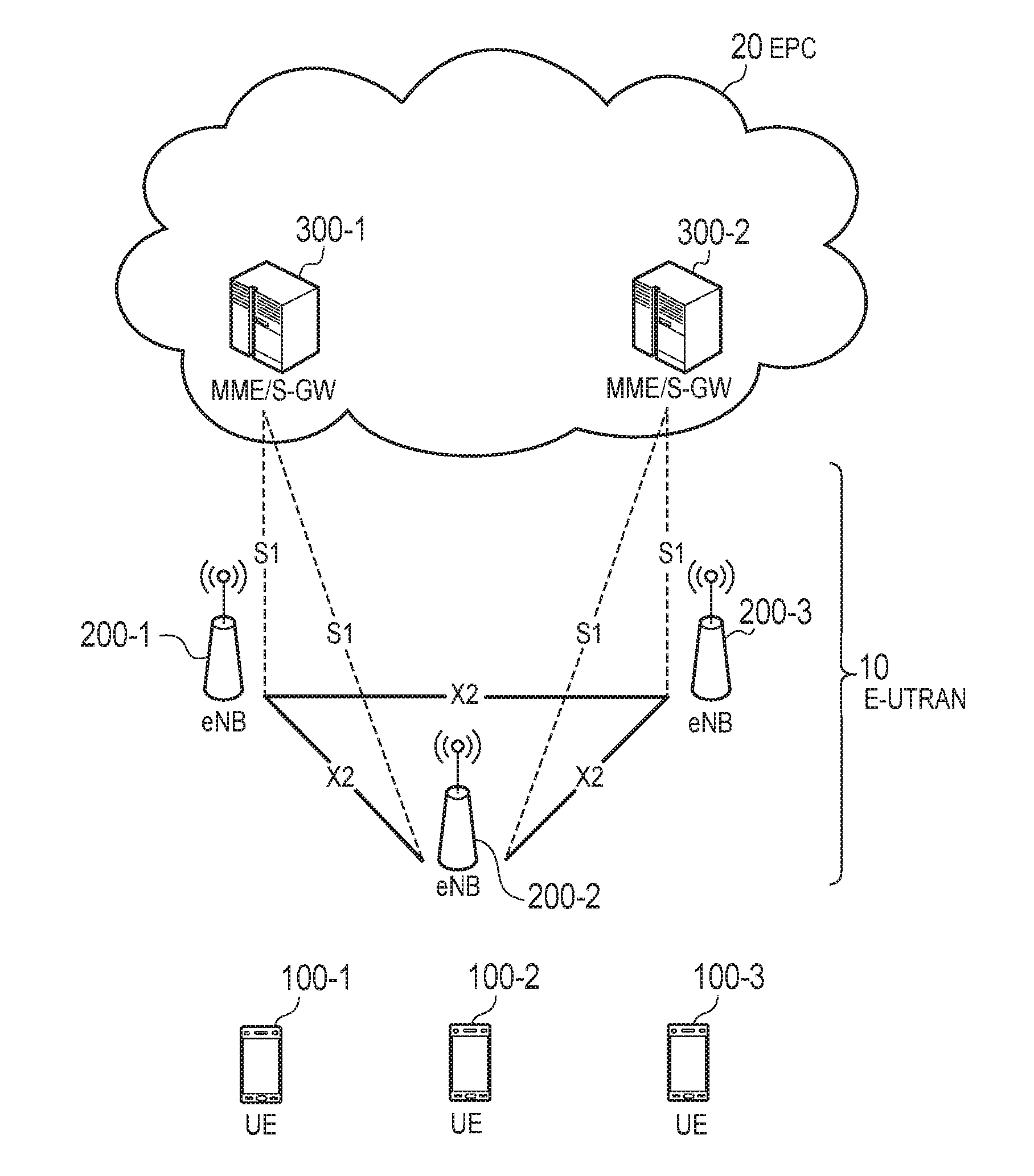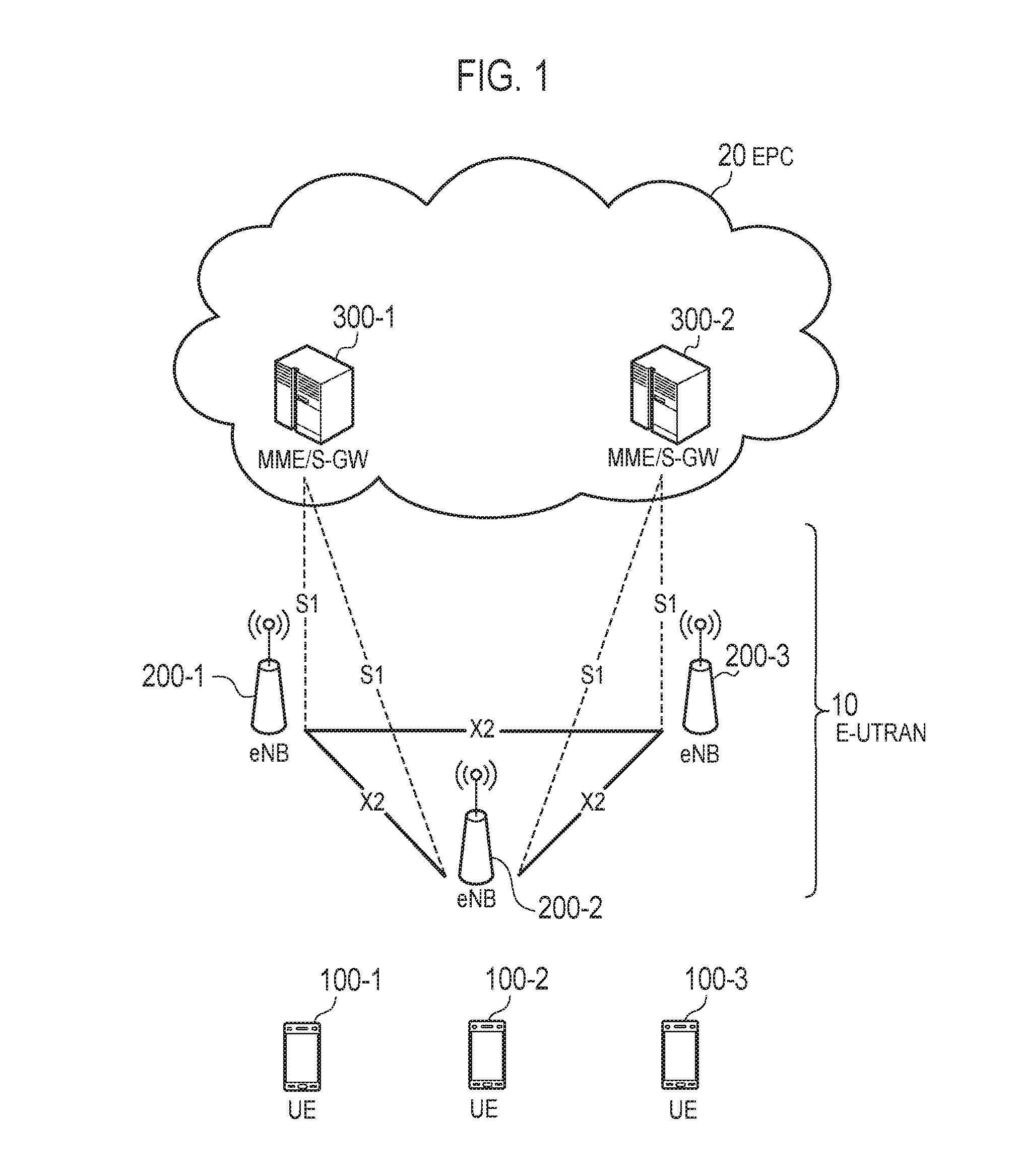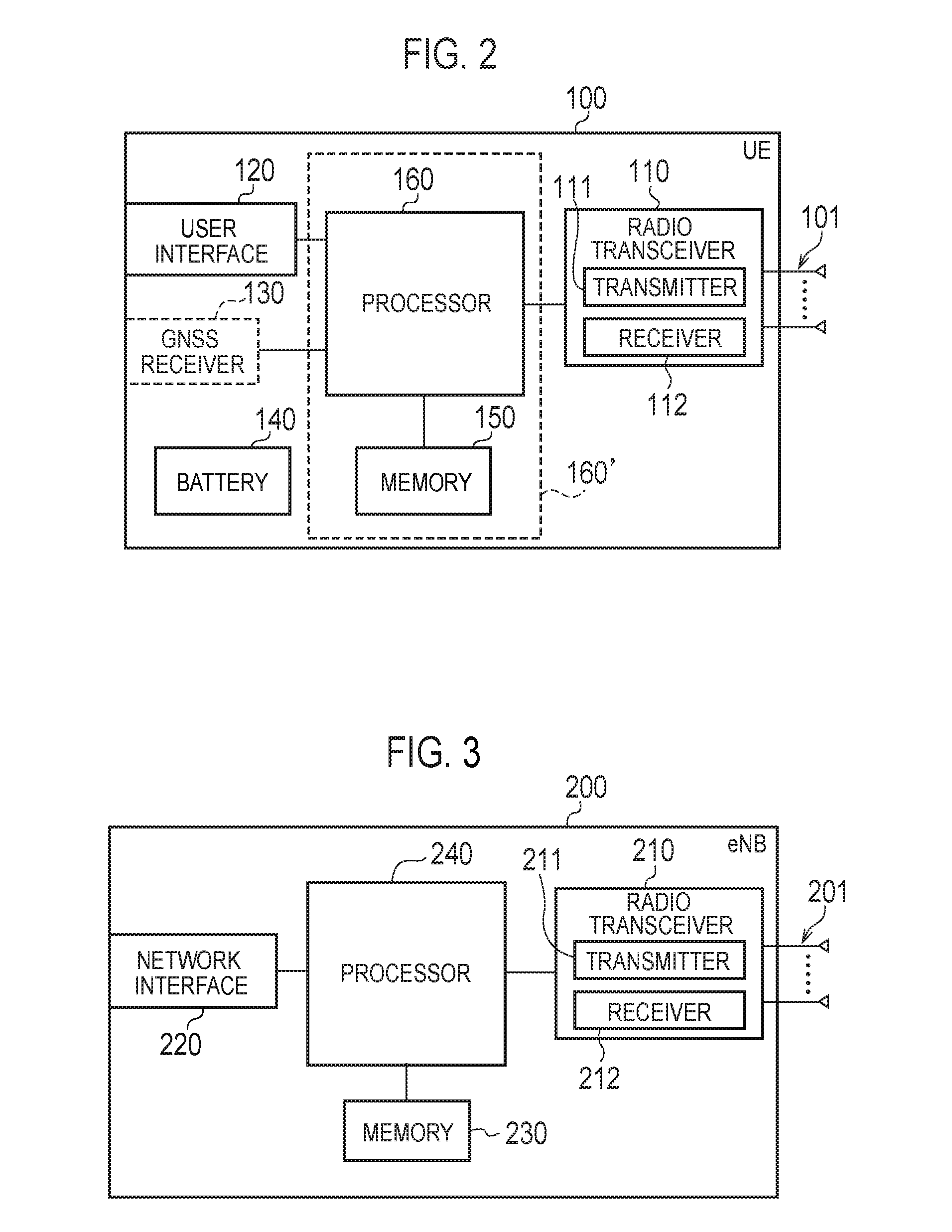Base station and communication control method
a communication control and base station technology, applied in sustainable communication technology, climate sustainability, high-level techniques, etc., can solve the problems of difficult to achieve energy saving restrict the deterioration of service quality, and reduce power consumption of a base station. , the effect of reducing the power consumption of a base station
- Summary
- Abstract
- Description
- Claims
- Application Information
AI Technical Summary
Benefits of technology
Problems solved by technology
Method used
Image
Examples
first embodiment
Modification of First Embodiment
[0104]According to the first embodiment, on the basis that the reason for handover rejection is “No Radio Resources Available,” the eNB 200-1 having received the rejection notice (Handover Preparation Failure) determines that no further handover is possible and ends the transition operation.
[0105]Instead of immediately ending the transition operation, the eNB 200-1 may retry the transition operation upon lapse of a certain time period after having determined that handover is not possible. When the load level of the eNB 200-2 has decreased during the aforementioned certain time period, continuation of the transition operation is possible. The aforementioned certain time period may be set to a constant value or a variable (setting may be made by EPC 20 or the eNB 200-2).
[0106]Instead of determining an increase in the load level of the eNB 200-2 based on the rejection notice (Handover Preparation Failure), the Resource Status Reporting procedure (see TS3...
second embodiment
Modification of Second Embodiment
[0134]FIG. 13 is an operation sequence diagram according to the second embodiment. As described in the first embodiment, assuming that the eNB 200-1 changes the energy saving method in order, it is preferable to handover cell edge the UE while the handover parameter is updated in order. In this case, it is preferable to notify the handover parameter from the eNB 200-1 to the eNB 200-2 a plurality of times either periodically or by using a change of the energy saving method as a trigger.
[0135]In the example of FIG. 13, firstly, the eNB 200-1 transmits an energy saving transition notice (Cell Transition Indication) to the eNB 200-2 (step S301). Thereafter, upon each change of the energy saving method (steps S302, S304, S306, S308), negotiation is performed between the eNB 200-1 and the eNB 200-2 (steps S303, S305, S307). In the negotiation, the eNB 200-1 notifies the eNB 200-2 of an updated handover parameter.
Other Embodiments
[0136]In the abovementione...
PUM
 Login to View More
Login to View More Abstract
Description
Claims
Application Information
 Login to View More
Login to View More - R&D
- Intellectual Property
- Life Sciences
- Materials
- Tech Scout
- Unparalleled Data Quality
- Higher Quality Content
- 60% Fewer Hallucinations
Browse by: Latest US Patents, China's latest patents, Technical Efficacy Thesaurus, Application Domain, Technology Topic, Popular Technical Reports.
© 2025 PatSnap. All rights reserved.Legal|Privacy policy|Modern Slavery Act Transparency Statement|Sitemap|About US| Contact US: help@patsnap.com



